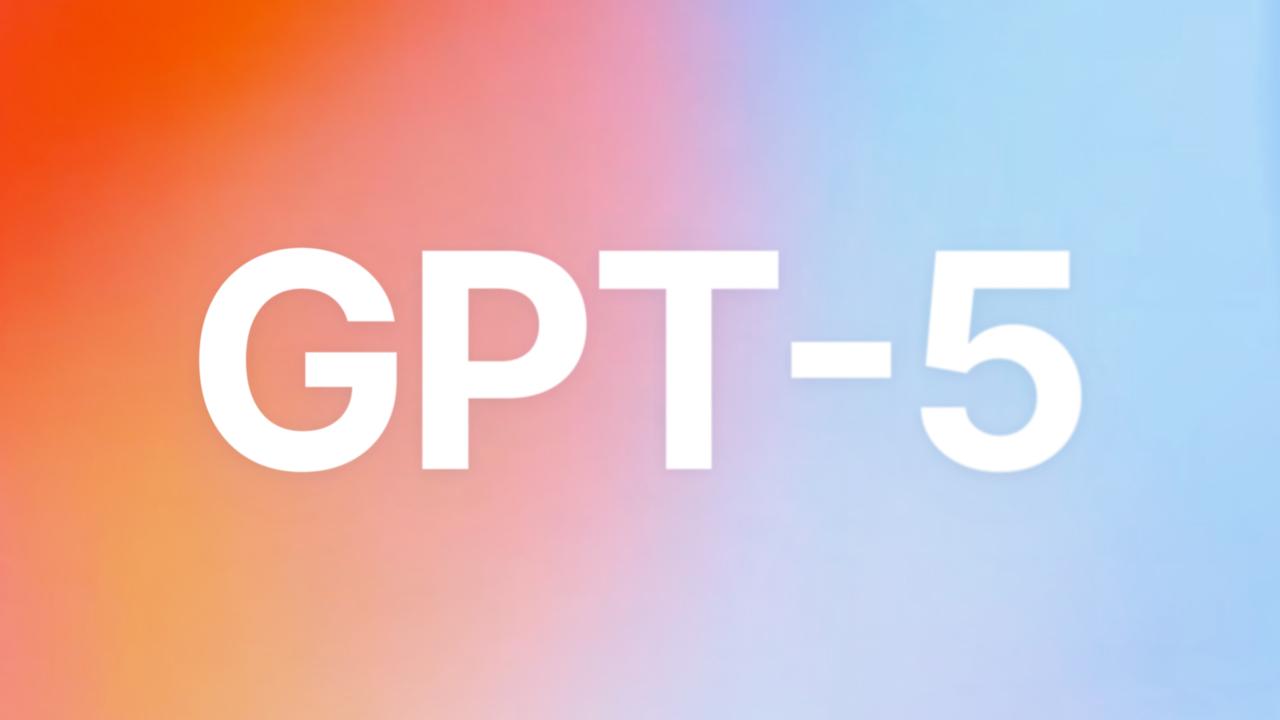How Good is GPT-5 for Writing Fiction?
- Reading time
- 6 min read
- Written by
- by Kate

With the new GPT-5 models out, you might wonder: are they any good for AI writing? For our livestreams, Corey and I spent time finding out, and we have some thoughts.
For context, we both have different writing styles: Corey is a hard-boiled sci-fi kinda guy, writing near-future dystopian worlds. I’m fascinated by intimate human relationships (not just romantic), and enjoy writing about how small moments can have huge ripple effects. Since our writing needs differ so much, our writing preferences will skew our opinions on the models.
The GPT-5 Family
GPT-5 is not a singular model, and instead a larger family of models. Each have their own use cases and price points and consist of:
- GPT-5 (the flagship product)
- GPT-5 Chat (the version people get to use via ChatGPT)
- GPT-5 mini (a smaller, but still very capable variant)
- GPT-5 nano (the “do it fast, and cheap” version)
You can access these models through services like OpenRouter or directly from OpenAI. This is part of the “Bring Your Own Key” (BYOK) approach we use in Novelcrafter, which lets you choose the AI that works best for you.
Access to the full GPT-5 model is very rate-limited at the time of writing (meaning you can send only so many messages per hour), so not everyone can use it yet.
How We Tested GPT-5 for Fiction Writing
During the livestreams, we did a variety of tests, but this blog post is concentrating on prose generation. You can watch the stream for a deep-dive.
My favorite test is to give an open-ended prompt with an implied genre, using our standard system prompt in Novelcrafter. This allows us to see:
- If the model understands the nuance of the genre
- How well the AI model writes prose without further detail, or prior prose
- If there are any formatting quirks in prose output
- How good it is at following word count requests
We then looked at the generated text and gave our opinions live. The thoughts below are curated based on the live stream.
Our Review of Each GPT-5 Model
GPT-5 Chat
First of all, given the GPT-5 Chat model costs the same as the base model, it’s not worth the money. Go for GPT-5 mini if you don’t have access to the full GPT-5 variant. The prose generated by GPT-5 Chat was fine, just rather bland and stilted, and I hated the opening as it was unengaging (see below). To make this a useful prose generating model, you’d need to do a lot of prompting.
Steam from Doreen’s teacup curled under her nose as she settled deeper into the plastic chair. The garden centre café hummed with the clink of cutlery and the faint whirr of the coffee machine. Beyond the glass, hanging baskets swayed in the breeze, spilling geraniums like red waterfalls. Toto sat under the table, staring at a crumb of scone as if patience alone might earn it.
Corey found the GPT-5 Chat model too tuned for chat (which totally makes sense, given its name), and not really suitable for prose generation. He also saw that GPT-5 Chat often included elements directly written to the author (like “What do you think of this”, or “I can continue this for you, if you want”) rather than just the prose. It’s the behavior you’d want for a chatbot, but not for prose writing.
In our opinion, the GPT-5 Chat variant is best for writers who want an AI that acts like a chatbot, offering suggestions and commentating on the prose it generated. As such, it’s best used in the Chat feature of Novelcrafter, and not the Write interface.
GPT-5 mini
The opening it generated was much better than GPT-5 Chat. However, the dialogue still felt stilted; it wasn’t how two older women would talk to each other. On top of that, many of the descriptions were too on-the-nose. For the price differential (GPT-5 mini is 5x cheaper), I still preferred GPT-5 mini to GPT-5 Chat.
“I told you the saucer rattled before the lights went.” Doreen tapped the cup against her thumbnail and peered through the glazed greenhouse roof where clouds mulled like soup.
“Rattled?” Phyllis set her coffee down with deliberate care and blew on it the way someone who always got the first sip from a joint pot might. “You mean like thunder?”
Doreen’s smile pinched. “Not thunder. A metallic buzz. Like a trolley stuck on the rails. Then—” She glanced at the tray, where Jam tarts sat like tiny beacons. “—then the pigeons went odd.”
Interestingly, in later tests, Corey found he could coax decent prose out of GPT-5 mini by having self-written prose running up to the test beat, so that the AI had the context of his style of writing.
In our opinion, GPT-5 mini is best for the budget-conscious writer who needs a partner for brainstorming, outlining, and getting a rough story down on the page. It’s a great value, but be prepared to do some editing to make the dialogue and descriptions shine.
GPT-5 nano
To start with the real bad: There was no dialogue punctuation.
That alone made the prose hard to read. Still, on a second look, nano did try to include more description than the other models, which might appeal to some writers.
Afternoon light spilled through the garden centre’s glass walls, catching on the frost on the edge of the teapot and turning the aisle pots into little suns. Doreen sat forward in her wicker chair, teacup trembling as steam rose in shy curls. Toto lounged at her feet, an eager head lifting at every pastry rustle from the counter. Opposite, Phyllis balanced a mug of coffee on a chipped saucer, the heat in her face stubborn and bright. The breeze carried mint and damp soil, and a radio somewhere behind the till hissed about the latest alien invasion, turning the town’s chatter into a shared buzzing chorus.
Corey had been hoping that GPT-5 nano might be a decent substitute for GPT-4o mini in scene summaries, but the model really seems to be tuned for non-writing related tasks and doesn’t summarize nearly as well as GPT-4o mini. Which makes sense, as OpenAI trained it mostly for use in agentic tool usage over creative output.
For us, GPT-5 nano is best for writers who need a quick hand with functional tasks outside of prose, and GPT-5 mini isn’t within your budget. This can include summarizing your text, and doing quick edits via text replacement prompts.
GPT-5
Provided you’re not writing anything that’s going to trigger off OpenAI’s tight moderation (which can be way too sensitive to even mentions of violence, conflict, or intimate scenes), this is my preferred model. I laughed at bits of the prose, and there were descriptions!
The lack of description was a little jarring at first, making the scene feel dialogue-heavy. However, this could be a huge plus for writers who want an AI to handle dialogue, leaving them to fill in the descriptive prose themselves.
“Hand me the milk. The big one tilted when it passed over the church. Bells went off without a push.”
“Tilted? Then they’re drunk on our air. Gerry said it’s CGI. He keeps the telly blaring.”
“Gerry couldn’t spot a saucer if it landed in his cuppa.”
“He wouldn’t notice unless it nicked the remote. Toto, leave it. The bun isn’t for you.”
Corey vibes with GPT-5’s ability to mimic his writing style the most out of these tests. Since he often writes dialogue heavy scenes, GPT-5’s tendency toward dialogue suits his workflow.
GPT-5 is best for authors who want a powerful collaborator to generate high-quality first drafts, especially those with a lot of dialogue. It excels at mimicking your personal writing style, just be mindful of its strict content filters if your story contains sensitive themes. However, be prepared to do a bit of coaxing to get it to write more than just dialogue.
So what does that mean for me?
So what are our conclusions? The GPT-5 family shows real promise for creative writing, even if the models feel a little temperamental right now. This is the first GPT model in a long time that I’ve personally been excited to work with. They also feel different to the last two years of GPT-4 style of writing we’re used to getting from OpenAI models.
To help you decide which one to try, here’s our quick guide:
For a brainstorming partner:
Use GPT-5 Chat. Best for when you want an AI that acts like a helpful chatbot, offering suggestions and commenting on the writing process itself.
For a budget-friendly first draft:
Go with GPT-5 mini. It’s a great value for getting your story down on the page, but be prepared to do some editing to make the dialogue and descriptions shine.
For a powerful writing collaborator:
If you can get access, GPT-5 is the star of the show. It excels at generating high-quality drafts, especially those with a lot of dialogue, and does a fantastic job mimicking your personal writing style.
What about GPT-5 nano?
Honestly, we don’t recommend GPT-5 nano for writing prose right now. It struggled with basic formatting and wasn’t a strong performer on other writing-adjacent tasks, either.
We’re excited to see how these models evolve. What about you? Have you had a chance to try any of the GPT-5 models, or does one in particular sound like the best fit for your writing project? Feel free to share your thoughts with us on our Discord!
Kate
Based in the UK, Kate has been writing since she was young, driven by a burning need to get the vivid tales in her head down on paper… or the computer screen.

